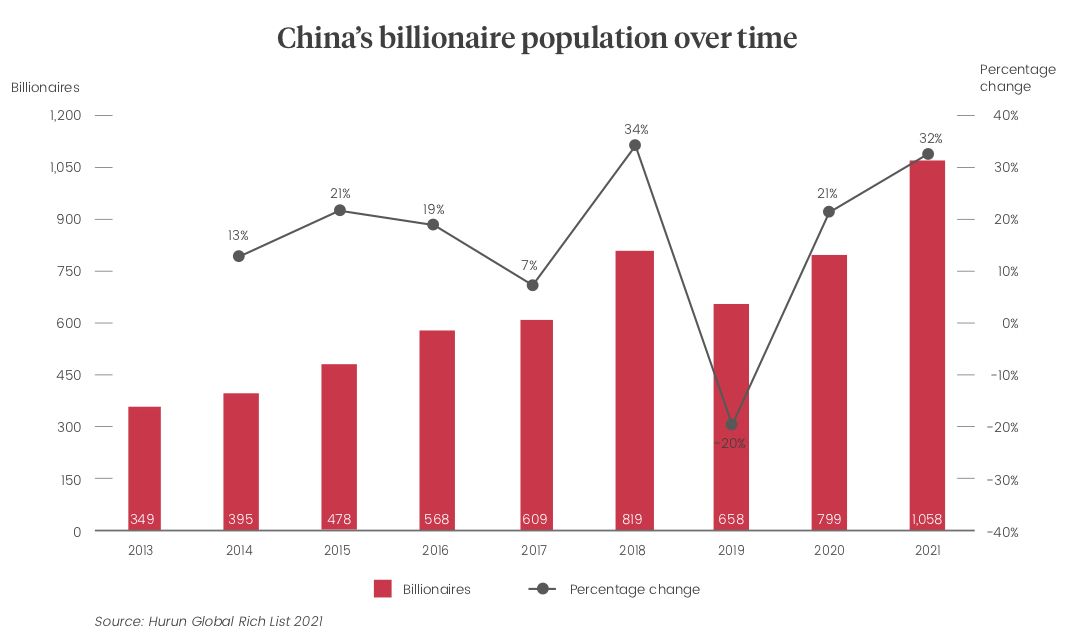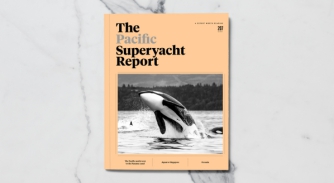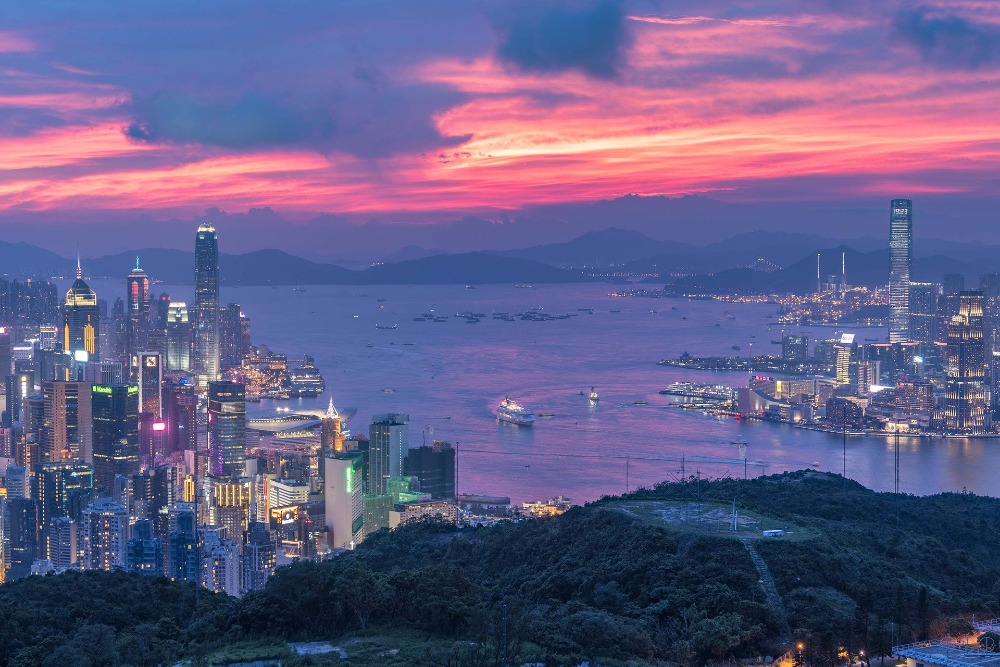China and Hong Kong: superyacht market dynamics
As China’s billionaire population hits record numbers, the industry is still trying to grow this budding market…
There are few geographical markets that present the superyacht industry with the same opportunity for growth as the Chinese market. Still at a relatively early stage of yachting development, in terms of domestic infrastructure and ownership, China certainly has a large, and growing, pool of potential superyacht buyers. Knight Frank’s 2021 edition of The Wealth Report recently set out its list of top-10 risers – the 10 countries that saw the biggest increase in their UHNWI population in 2020 – revealing that China saw the largest increase, at 16 per cent.
Furthermore, according to Hurun Report’s Hurun Global Rich List 2021, China has outpaced the United States to become the first country in the world with more than 1,000 billionaires. The publication reveals that, at the beginning of 2021, China had 1,058 billionaires with their wealth denominated in US dollars. “Despite the trade war with the US, China adds 259 billionaires and becomes the first country with more than 1,000 known billionaires, surpassing other countries including the US, India and Germany,” the report says.

In light of the region’s growing billionaire population, the recently-published The Pacific Superyacht Report explores the current dynamics at play in the Chinese superyacht market from a buyer perspective, as well as the potential that China and Hong Kong present to the superyacht industry.
“There is definitely an upward trend in the superyacht market in China, as the wealth of the mainland Chinese increases,” says Joe Yuen, of Lodestone Yachts. “The Chinese tend to purchase new superyachts from production yacht dealers, but now you see more and more Chinese buying semi-custom or full-custom superyachts through professional yacht brokers. The production yacht dealers have done well with their marketing in the region, and you are also beginning to see larger semi-custom superyachts cruising in the harbours.”
When talking about the Chinese superyacht market, it is important to distinguish between the Hong Kong market and mainland China market. As Rock Wang, Feadship’s Asia representative, explains, “Hong Kong is already a very mature yachting market, so there isn’t much potential for growth. While mainland China is already very active, it will be growing rapidly in the next 10 years.”
The reasons for these two markets being at two very different stages of yachting development are well documented. While Hong Kong may have a longer history of a yachting culture than mainland China, the most obvious barrier to the growth of the domestic Chinese market is its weighty import duties on foreign yachts, compared to tax-free Hong Kong.
“The matter of taxation has been a major limiting factor,” says Mike Simpson, managing director of Simpson Marine. “There is a very high import tax on yachts, it has been 43.65 per cent, but that has recently been reduced to 38.1 per cent on motoryachts and 35.6 per cent on sailing yachts over 8m [at the time of writing]. The tax has been a big deterrent for a lot of people – when you are spending a large amount of money to buy a yacht, no one is very happy about spending nearly 50 per cent more for the privilege of bringing it into, and flagging it in, China.”
For Simpson, however, the biggest barrier to the growth of the domestic market is the perception that superyachts in China are going to attract a lot of attention. “Currently there are only about 30 yachts over 30m in southern China altogether (excluding Hong Kong), so any new yacht is going to stand out, and this is not always very welcome. Normally, the wealthy try and keep a low profile,” he continues. “There is plenty of wealth in China, but there is a fear of attracting attention by any obvious displays of wealth.”
“There is plenty of wealth in China, but there is a fear of attracting attention by any obvious displays of wealth...”
In both the Hong Kong and mainland China markets, buyer habits differ depending on the size sector they are buying into, and whether they are buying for domestic or overseas use. According to Wang, because the majority of marinas in Hong Kong offer berthing up to 35m, both the 30-35m new-build and brokerage markets in Hong Kong are very active, with most clients keeping their boats in Hong Kong and using them as day or weekend boats for local cruising. For the larger size sectors, however, clients tend to enjoy their boats overseas due to the berthing limitations of Hong Kong’s marinas.
Wang observes further intricacies in the 35m-plus sector depending on size range, with Hong Kong clients generally preferring to buy new over second-hand. “Buying a yacht is more expensive in the 35-60m size range, so clients spending this much money tend to want something new,” he explains. “About 60-70 per cent of these clients will choose a new build. Most clients also don’t want to wait too long for their yacht, but thankfully many shipyards offer production or semi-custom models in this size range, which shortens build time.”
According to Wang, this preference for ‘something new’ augments even further in the 60m-plus market. “The vast majority of clients want a new-build when buying a yacht over 60m,” he adds. “Every yacht of this size has a very specific personality and, because of this, many of the clients I have worked with feel that a second-hand yacht of this size does not and would not belong to them.”
In terms of the market in mainland China, there are other dynamics at play. With government restrictions on the import of second-hand yachts older than one year, as well as a lack of brokerage agencies and surveyors to advise clients on second-hand purchases, there is virtually no second-hand brokerage activity within China, even in the 30-35m sector, where berthing is easier.
However, the mainland Chinese ownership in the 35m-plus market is similar to that of Hong Kong. “Except that the mainland Chinese prefer to buy new builds even more than Hong Kong clients,” he says. “It is the Chinese mentality; if they are spending 20-30 million euros, they want something new.”
In terms of market potential for the superyacht industry, the Chinese market is huge in the same way that the country’s population is huge and, in light of the country’s rapidly growing population of UHNWIs, Wang is very optimistic about the future potential of the market in mainland China. He puts it simply: “It’s human nature. When you have a lot of money, you want to enjoy life and yachting is one of the best ways to enjoy life.”
“From the crew to the brokers and designers, every sector of this industry is lacking Chinese professionals...”
Despite this optimism, Wang believes that there are certain changes that could be made in order to help stimulate growth. One barrier is the scarcity of Chinese representation in the industry. “From the crew to the brokers and designers, every sector of this industry is lacking Chinese professionals,” he says. “As an international community, we should look to find Chinese talent. If there were just 15 to 20 Chinese brokers, the market would change. Shipyards also need to have marketing material in Chinese because the majority of Chinese clients feel more comfortable reading Chinese than English. It is something very basic that the industry can do today that will have a significant impact in the future.”
Simpson agrees that a lack of qualified local crew is certainly a limiting factor to the growth of the Chinese market. “Owners accept that they will have to hire qualified foreign crew for now, but many Chinese owners don’t speak English and they would rather have at least some crewmembers who can communicate with them in their own language,” he says, adding that optimism lies in the MCA-approved Galileo Maritime Academy, Thailand. The Academy offers training courses to the Asia region, which will help to get more local crew trained up and qualified to work on superyachts in the future.
More infrastructure to attract visiting yachts would also help to give the superyacht industry more visibility in China, and possibly attract the attention of qualified buyers. “When there are more marinas and professional crew, this will help increase the popularity of superyachts,” concludes Yuen. “The Chinese government is also promoting various types of tourism, including yacht tourism, in the Free Trade Zone of Hainan Island and The Greater Bay Area. I hope this will bring more charter yachts to the Far East.”
This article appears in full in the recently-published The Pacific Superyacht Report. For complimentary digital access to the magazine, please click here.
Profile links
NEW: Sign up for SuperyachtNewsweek!
Get the latest weekly news, in-depth reports, intelligence, and strategic insights, delivered directly from The Superyacht Group's editors and market analysts.
Stay at the forefront of the superyacht industry with SuperyachtNewsweek
Click here to become part of The Superyacht Group community, and join us in our mission to make this industry accessible to all, and prosperous for the long-term. We are offering access to the superyacht industry’s most comprehensive and longstanding archive of business-critical information, as well as a comprehensive, real-time superyacht fleet database, for just £10 per month, because we are One Industry with One Mission. Sign up here.
Related news

The Pacific Superyacht Report
The issue amalgamates the most pertinent themes from such an expansive and diverse region
Business
Related news
The Pacific Superyacht Report
5 years ago
NEW: Sign up for
SuperyachtNewsweek!
Get the latest weekly news, in-depth reports, intelligence, and strategic insights, delivered directly from The Superyacht Group's editors and market analysts.
Stay at the forefront of the superyacht industry with SuperyachtNewsweek




